How to Determine Shoe Size – Why Your Child is Probably Wearing the Wrong Shoe Size

How to determine shoe size is a matter of both length and width, the latter being a detail that most parents tend to ignore. If you are going to be getting your kids’ shoes online you must know your child’s exact foot size.
I am always emphasizing to parents to keep one thing in mind: It doesn’t matter how many features a particular shoe provides, if the shoes are not the correct size (length and width), your child won’t get any of the benefits that the shoes have to offer. With that said, do you always have a hard time finding the correct shoe size for your child?
Several online tools claim to provide your child with the most accurate foot size. Please don’t waste any money on those tools. These tools are ineffective because they are not able to capture two key factors that determine the final foot size: instep and width.
I can tell you exactly which shoe size your child needs depending on the shoe brand or shoe style that you like, but first we need to be 100% sure of your child’s foot size. I created a 2 simple step method that will retrieve your child’s foot size, and you can learn about it in a different article I wrote called:
1️⃣ Measuring Your Child’s Exact Foot Length
Make sure that your child is standing straight, and then place a measuring tape or ruler below your child’s heels. It’s important that you measure your child’s feet while standing, as on weight-bearing the foot becomes longer. Measure both feet as we all have one foot larger than the other one.

We will input your child’s foot measurements in the standard foot measuring tool (Brannock device) to retrieve your child’s exact foot length.
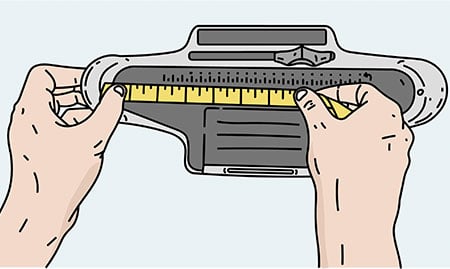
2️⃣ Pictures of Your Child’s Foot Width:
The pictures below will help me determine whether your child has narrow, medium, wide, or extra wide feet. Also, the pictures will help me see whether your child has a high instep and additional information such as whether your child has flat feet or not. Below you can find examples of how the pictures should look like:
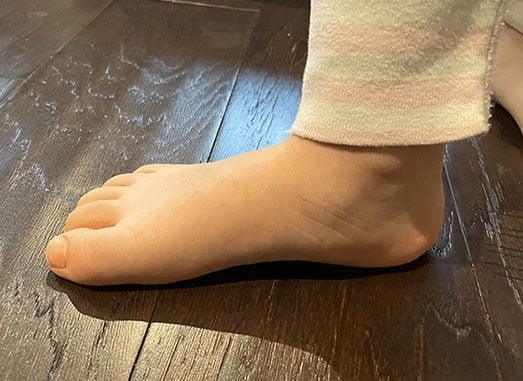
This image helps determine whether your child is flat footed and whether your child has a high instep or not.

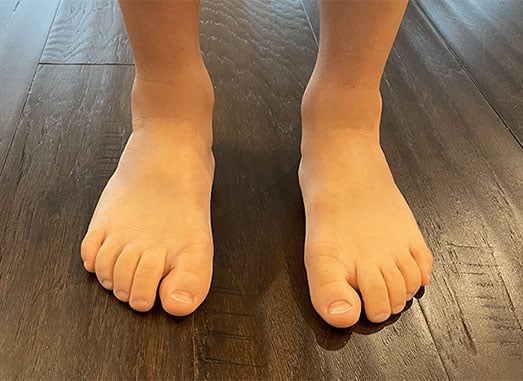
This image helps determine whether your child has narrow, medium, wide, or extra wide feet.
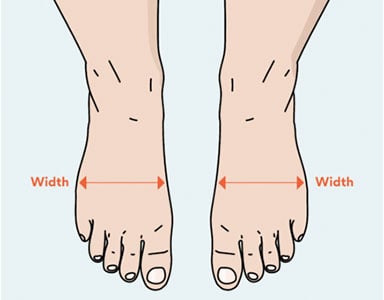
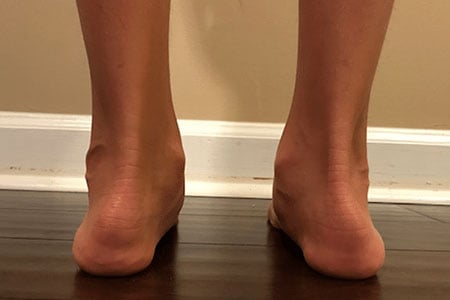
This image helps determine whether your child has rolled ankles or not.
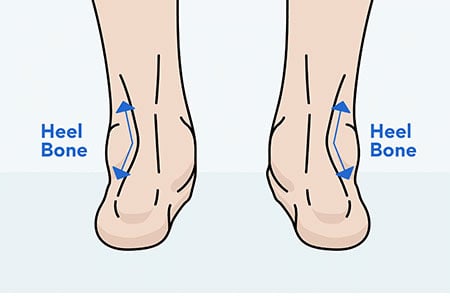
Please note that I won’t need the measurements of your child’s foot width, the images will be sufficient to help me determine whether your child has narrow, medium, wide, or extra wide feet.
Feel free to include in your email any additional information I should know about your child’s feet:
You will then receive a response within 24 hours with your child’s exact foot length, shape, and specific shoe recommendations as needed.
How Much Does This Service Cost?
This service is completely free. I am passionate about fitting children’s shoes as I truly believe that the correct type of shoes can be life changing. Children’s feet are constantly developing, and what happens to their feet during their childhood will affect their physique as they grow older.
If you wish to support the work of Fitting Children’s Shoes, you can Donate Here. Your support helps ensure that families around the world can find the correct shoes for their children, regardless of their foot shape or condition.
Most Common Mistakes Parents make
The most common mistake parents make is assuming that once they figure out their child’s foot size, that size will automatically translate into the shoe size that the child needs.
Any experienced shoe fitter will tell you that shoe sizes are inconsistent, and that different shoes in identical sizes and widths will measure and fit differently. For example, a shoe size 10 in a medium width (“M”) will fit differently depending on if the shoe was made by the shoe company New Balance, Saucony, or Stride Rite. Even among the same shoe brand, shoe styles will fit differently.
Why are Shoe Sizes Inconsistent? – There are Many Reasons
The reasons for this inconsistency are many, and some of them are:
1️⃣ Style affects size: A pair of New Balance shoes in a given size and width will fit differently than a pair of Saucony shoes of the same size and width.
2️⃣ Materials can affect size: Two shoes of identical style and size, but one with a leather upper and the other one with urethane upper, will often fit differently.
3️⃣ Construction/Shoe Manufactures affect size: The process by which a shoe is made can sometimes influence size.
4️⃣ Lasts affect size: Lasts are designed on countless different shapes, each with its own volume or inner space allowance, which in turn affects the dimensions and the fit.
5️⃣ Heel height affects size: Shoes on high versus low heels will fit differently on the same size.
I know you are probably thinking that you didn’t need to know all that, but I wanted to break it down for you so you have a better idea of why shoe sizes are so inconsistent. It is not to make your life harder when finding shoes for your child, trust me!
While size is obviously important, parents tend to over-magnify its importance by the assumption that if the shoe is the right size, it will automatically deliver the proper fit. This is untrue.
Knowing your children’s foot is just a starting point in realizing what size they will end up wearing. For example, as a standard rule of thumb, I recommend providing children with a certain amount of growing room —3/16 of an inch or 0.4 centimeters— of space between the child’s longest toe and the end of the shoes.
While working at the shoe store, once I move the child’s foot away from the Brannock device (standard foot measuring tool) the parents immediately ask: what is my child’s shoe size?
My answer tends to be: Your child measures a foot size 7, but he/she might need a half size longer or even a whole size longer depending on the shoe style that you choose. Sometimes they might even need a smaller shoe size than the size that they actually measured (if the shoes fit long).
The good news is that I am familiar with how most shoes fit, so if you are in doubt about how a particular shoe style fits, please don’t hesitate to contact me and I will be able to help you.
Breaking In Shoes- Necessary or a Way to Wrap Up the Sale?
I am sure you have heard of the term “break in period”. After fitting children’s shoes for 10 years I never understood what the break-in-period means. I believe salespeople use that term as a way of wrapping up the sale, and parents give in when they are feeling impatient.
I have an adamant belief that shoes should be comfortable before your child leaves the shoe store. One of the main reasons people break-in-shoes is because they are not aware of the true size and shape of their feet.
I always make sure that the child walks and runs on a hard floor surface to make sure the shoes feel good. Next time you are at your local children’s shoe store buying new shoes: Test-Don’t Break!
Hand-Me-Down Shoes – Don’t Do It!
Some parents come to the store with hand-me-down shoes that were passed through family members or friends asking my opinion on whether I believe the child can wear them.
Once a child has worn a pair of shoes, these tend to mold to the shape of their feet, which might have an impact on the shape of your child’s foot.
It’s important to understand that there is no such thing as two feet alike. We might have two different children with a foot size 10 with extra wide feet. However, the volume of their feet might be different. The instep of the foot also plays a key role when fitting children’s shoes. If you don’t know what the instep of the foot is, you can’t possibly be getting your child the correct shoe size. Take a look at where the instep of the foot is located:
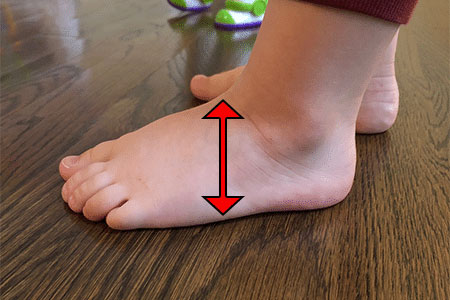
Some children might have a high instep, which requires wider and deeper shoes.
Another reason why I don’t recommend hand-me-down shoes is that if you pay close attention and look at the heel counter of the shoes —the back part that provides ankle support— you will notice how in most cases it will be stretched out. Most children tend to take their shoes off without undoing the velcro strap or undoing the shoelaces.
How Often Does Your Child Needs a New Pair of Shoes?

My answer is: Before the shoes become outgrown. The frequency of new shoe purchases for children is a budget problem for many families. In fact, the human tendency to postpone buying new shoes is one of the most threatening problems for healthy foot development.
Because young children’s shoes are worn for such short periods and hence never wear out, the tendency of some parents is to allow the child to continue to wear the shoes, even though they might be outgrown.
Do not hesitate to contact me directly if you have any further questions or if you are having a hard time finding a specific pair of shoes for your child.

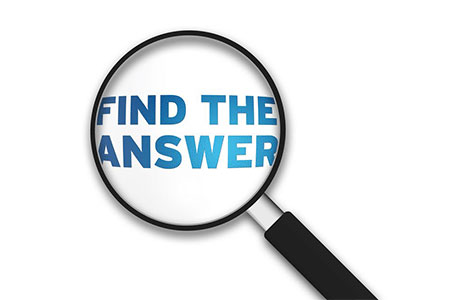
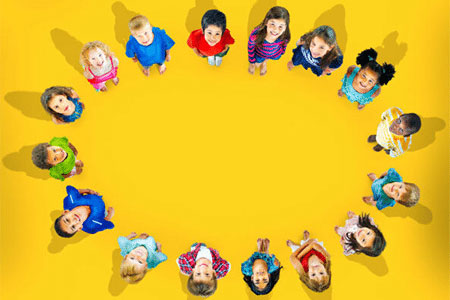
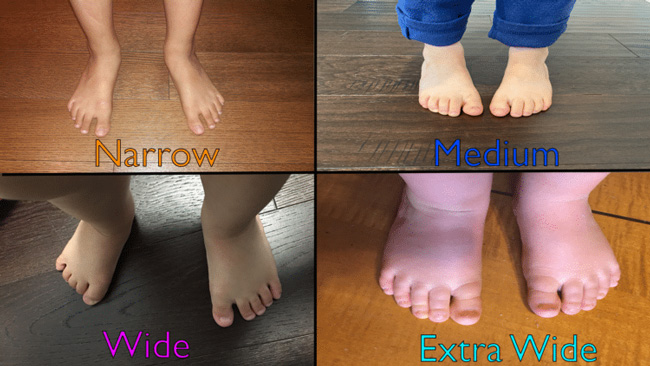
I agree that parents really need to take the time to get the right dimensions for their kids’ shoe sizes. I read somewhere that most children are not wearing the right shoe size at any given point in time because parents don’t know how to properly measure their kids’ feet. So there is a great deal of wisdom in recommending that they consult with a shoe fitter first. Otherwise, wearing wrong shoe sizes might lead to serious foot deformities, and no responsible parent wants that for their child.
Hello Flo,
Thank you! I am always trying to emphasize to parents the importance of well fitted shoes since it will end up saving a lot of time and money in the future.
I thought this was very interesting to read about. I have three young boys and both of my older boys are starting to grow out of their current shoe size but the pair I bought that is the next size up is way too big! I then bought another pair of shoes the same as their current shoes and they fit just fine. So though the shoes say they’re the same size they’re definitely not the same.
It was interesting to read about where those differences come in and why they’re there.
I’d also never heard a reason as to why hand-me down shouldn’t be given. It does make sense though. I’ve noticed that anytime I borrowed another persons shoes they’re worn out and fit their feet. When i use them they’re uncomfortable.
I am sure you live a pretty hectic life with three boy’s. It’s like you don’t have enough to worry about, now shoe companies are making your life hard, wouldn’t it be nice if the actual size of the shoe meant something? Unfortunately it is just a starting point.
You have three boy’s, so do not hesitate in keeping snow-boots or rain-boots to pass them to the younger ones. This type of footwear will be okay to wear even though they have worn, since they tend to keep their shape and they will only wear them for a couple of hours once in a while. I am glad you found the post helpful!
When shopping for shoes it is very important to try the shoes on for comfort. The information provided in the post is accurate and should be considered a good guideline for your shoe shopping experience. Thanks for the value you provide.
Vena,
I am glad that you found the post informative. I always emphasize the importance of trying on shoes and finding the pair that feels good in the store. If it does not feel good in the store,you are most likely trying the wrong size shoe.
You are spot on when you say shoe sizes vary. The style and make of the shoe, where it was made etc., can all affect the size. When I go into a shoe shop the staff ask what size I take and I always say, “It depends”. This is a very useful post, definitely one to be referred back to. Thanks for writing this.
Darren,
When you go to a shoe shop, always ask to try the shoes on. I really like your answer “it depends” when you are asked what size you need.Thank you for stopping by.
I enjoyed your post on “How to determine shoe size”. I agree about not wearing hand me downs. Unfortunately I had to wear them as a child and it wasn’t a enjoyable experience. Thanks for the great information.
James
James,
Thank you for stopping by and I am glad you found the post informative.
When I was a kid my feet were a lot narrower than the shoes that were, supposedly, my size. This is a great article that all parents should check out before buying shoes for their kids. My solution was to put on the new shoes and walk around the store to see how comfortable they were.
PJ,
I always have children walk and run up and down the hallway before they leave, that way they might speak up if something does not feel right. The only problem with this is that they end up enjoying it a little bit too much, and it takes extra time for them to come back to their seat, but it is all worth it.
My children are older and can buy their won shows now, BUT, I was glad to read that buying new cheap shoes is still better than hand me down shoes. We didn’t have much money way back then and couldn’t afford anything expensive.
Donna,
What makes children shoes expensive is the frequency that they should be purchased. Lie I mentioned in the post it is better to purchase the very cheapest new shoe than a hand-me-down worn shoe.
That is really interesting. I always just thought that foot length was the determinant of shoe size, and always wondered why the different companies couldn’t all have the same sizes! I understand now! It’s really reassuring that you can often return shoes you buy online for free, so there is no risk involved with getting the wrong size.
I just have one question for you: what are “Lasts”?
Emily,
I am glad you found the post helpful. You are correct about being able to return the shoes if purchased online, however, if you are buying shoes for your child that can be extremely time consuming. To answer your question the last is the mold over which the shoes is made. In other words, the way the shoe is design.